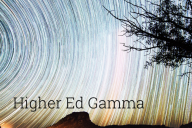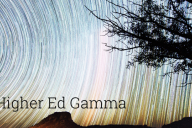You have /5 articles left.
Sign up for a free account or log in.
In 1934, a year after Hitler’s ascent to power, Ernst Jünger, a World War I storm trooper, published an essay rejecting liberal, bourgeois society’s embrace of security, ease, pleasure and comfort. He called instead for a new man who was willing to accept pain and discipline and adopt a cold, detached outlook on human life. Although Jünger never joined the Nazi Party, his essay “On Pain” helps us understand the mentality that considered war “an incomparable schooling of the heart,” eschewing pity, sympathy, mercy and compassion, and that embraced a cruel, heartless, racist nationalism.
Our institutions would do well, in my opinion, to add an interdisciplinary course on pain into the curriculum. Pain, like loss, is one of the hallmarks of human existence. Whether the pain is physiological—the result of a toothache, a broken bone, tissue damage or the ravages of cancer—or emotional and psychological or the pain of loneliness, boredom, heartbreak or exhausting physical labor or of the traumas of violence, assault, war and displacement, suffering, anguish and distress are ubiquitous. Pain is an essential part of the human experience.
Contemporary attitudes toward death are, in large measure, an outgrowth of the pain that many undergo at the end of life. A chief justification for medically assisted suicide is to relieve unnecessary suffering. It’s not death that many fear, but a protracted, painful process of dying.
Then there’s the deliberate infliction of pain through various forms of torture like waterboarding, beatings, rape, solitary confinement, electric shocks and subjection to loud noises or, more subtly, through gaslighting or verbal abuse.
Thus it comes as a bit of a surprise to discover that few canonical works of literature describe or explore pain. Nor do college curricula, for the most part, examine or analyze pain. Within the academy, as in our individual lives, we tend to evade, dodge or deny pain’s omnipresence.
The results of these omissions are palpable. Not only do students lack a nuanced language to describe pain, they also suffer from a divide between the medical and physiological understanding of pain and of the way that pain is felt and experienced emotionally and psychologically.
In our time, pain relief has become a legal, moral and political battleground, with some saying that physicians undertreat pain while others point to opioid overdoses as outgrowths of pain’s overtreatment. Then there’s the ongoing discussion of whether animals have meaningful sentience that humans have a duty to respect.
I hold the view that today’s college curriculum deals inadequately with existential issues: evil, identity, intimacy, tragedy, yes, and pain. Indeed, I’d go further and attribute part of the humanities’ decline to the failure to engage systematically and holistically with these existential issues.
Ours is, after all, a golden age in the academic study of pain. There’s Rob Boddice’s Pain: A Very Short Introduction and Roselyne Rey’s The History of Pain, which provide gripping overview of pain’s shifting meanings across time and space, cultural understandings of supposed differences in pain rooted in race and gender, and therapeutic remedies for pain. Neurosurgeon Frank T. Vertosick Jr.’s Why We Hurt uncovers pain’s evolutionary, physiological and psychological functions and discusses the efficacy of various nonpharmaceutical pain treatments for the pain caused by neuralgia, rheumatoid arthritis, angina and cancer.
There’s also Javier Moscoso’s Pain: A Cultural History, which explores the rhetorical and iconographic strategies, from the Renaissance onward, deployed by artists, authors and other thinkers to represent suffering. For a detailed history of the Sackler family’s role in popularizing Valium and OxyContin, there’s Patrick Radden Keefe’s Empire of Pain.
Abdul-Ghaaliq Lalkhen’s Anatomy of Pain seeks to explain why human responses to various pains vary—why, for example, women who undergo cesarean sections report less pain than those who have kidney stones removed and why soldiers respond differently to gunshots than civilians.
Especially exciting is Keith Wailoo’s Pain: A Political History, which recovers the legal and legislative struggles between conservatives and liberals over what constitutes a compensable disability; how end-of-life pain should be treated; differential access to painkillers by class, race and gender; and the role of media and pharmaceutical companies in shaping public policy toward pain.
More than any other scholar, Harvard’s Elaine Scarry ignited the serious cultural study of pain with her landmark 1987 meditation on The Body in Pain. Scarry was struck by pain’s inexpressibility and incommunicability: by the fact that in the face of pain, in Virginia Woolf’s famous phrase, “language runs dry.”
Scarry’s book made it clear that intense pain should not be understood simply in physiological or mechanistic terms, but also in its psychic impact—in the way that it reduces human beings to their physical bodies, making it barely possible to transcend the state of pain. Also, she adds, discussions of pain are politically laden in the broadest sense. Whether we take another person’s pain seriously reflects our assessment of whether that person is guilty of exaggeration or embellishment and deserves our sympathy.
No one has done more to invest pain with a history than Joanna Bourke, whose 2017 Story of Pain: From Prayer to Painkillers does a masterful job of reconstructing how Western societies have understood, explained and treated pain. Pain, Bourke demonstrates, may be individual, private and radically subjective, but it is also informed by culture: by context, ethical and theological frameworks and bias.
Some societies and cultures, she shows, esteem a stoic acceptance of pain. Others regard pain as punishment or as a test of faith or as redemptive, illusory or character building. Whereas some earlier thinkers regarded pain as the product of bodily organs out of balance, our own time tends to treat pain as a neurobiological phenomenon. Some, in the past, considered infants or women or Southern Europeans or nonwhites or the working class as partly or totally insensitive to pain (an idea that very unfortunately lives on). Then there’s the view that heightened sensitivity to pain is an emblem of human progress.
As Bourke’s book shows, anesthesia’s discovery represented a fundamental turning point in human attitudes toward pain. It became increasingly plausible to believe that pain was avoidable or, if not preventable, could and should be treated. But, as we know all too well, pain isn’t preventable nor readily remediable.
Today, physicians strive to measure pain objectively. Pain questionnaires, for example, ask patients to describe their suffering largely in terms of its intensity. Is it moderate or searing, pressing and crushing; is it constant or throbbing? But severe pain can’t be reduced to a single measure, and neither biomedicine nor opiates or alcohol or psychoactive drugs is sufficient to treat the impact of chronic pain. A pain-free existence is an illusion.
Freud once said that the purpose of psychoanalysis was to transform “neurotic misery to ordinary human unhappiness.” In terms of pain, those of us who aren’t physicians or psychologists must do the best we can. Be attentive to the human suffering around us. Empathize with those in pain. Validate their hurt. And encourage them, with your support, to name their pain and to disentangle and deconstruct the multiple forms of torment that they are experiencing.
To the extent possible, try to feel others’ pain. That’s not enough, but it’s not nothing. It turns out that empathy and human connection really do have a palliative effect.
Steven Mintz is professor of history at the University of Texas at Austin.



